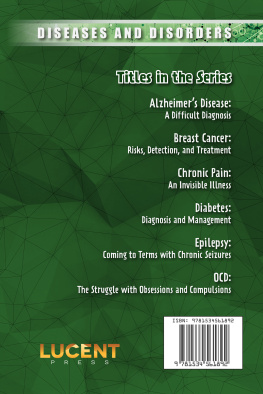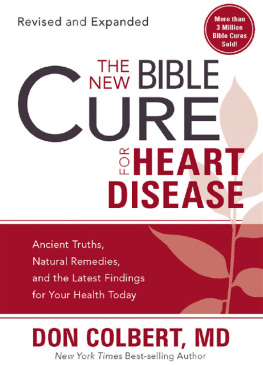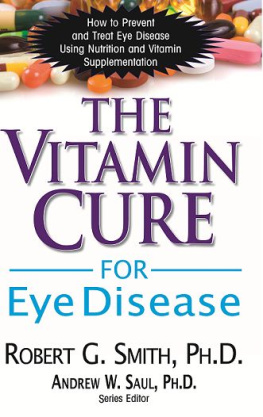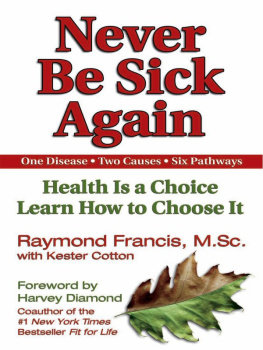Cure Gum Disease
How to Reverse Gum Disease and Avoid Surgery with Natural Remedies
Table of Contents
Cure Gum Disease
Chapter 1: What Exactly is Gum Disease?
Chapter 2: Conventional Treatments of Advanced Gum Disease
Chapter 3: Treating Gum Disease from Home
Chapter 4: The Magic of Oil Pulling
Chapter 5: Powerful Supplements that Fight Gum Disease
Introduction
Thank you for downloading this book.
Going to the dentist can get expensive even with dental insurance. Trust me I know, since I was one of the millions who had gum disease and unable to afford conventional treatment. It turned out to be a blessing in disguise. Thats what prompted me to research natural ways to cure gum disease. Ive gone from sore, bleeding gums with 6mm and 7mm pockets to pink healthy gums and a whiter, brighter smile.
Gum disease can be a really scary and painful process. When we are in a state of fear, we tend to panic and disregard common sense which in this case would be to look for a cure instead rushing our decision to allow a dentist to fix the problem for us. But in almost all cases, the fix is only a temporary one that leads to more problems down the road and of course, a lot more money. And ultimately, most people end of losing their teeth anyway.
Prepare yourself for some radical changes to your gums and teeth. By learning to utilize natural methods to support the health of your teeth and gums, you can join the growing number of people who are naturally reversing gum disease.
The goal of this book is to empower you to take full control of your dental health, including reversing your gum disease and the need for expensive surgery.
Enjoy!
Sarah M. Givens
Copyright 2014 Empowered Life Network- All rights reserved.
In no way is it legal to reproduce, duplicate, or transmit any part of this document in either electronic means or in printed format. Recording of this publication is strictly prohibited and any storage of this document is not allowed unless with written permission from the publisher. All rights reserved.
The information provided herein is stated to be truthful and consistent, in that any liability, in terms of inattention or otherwise, by any usage or abuse of any policies, processes, or directions contained within is the solitary and utter responsibility of the recipient reader. Under no circumstances will any legal responsibility or blame be held against the publisher for any reparation, damages, or monetary loss due to the information herein, either directly or indirectly.
Respective authors own all copyrights not held by the publisher.
The information herein is offered for informational purposes solely, and is universal as so. The presentation of the information is without contract or any type of guarantee assurance.
The trademarks that are used are without any consent, and the publication of the trademark is without permission or backing by the trademark owner. All trademarks and brands within this book are for clarifying purposes only and are the owned by the owners themselves, not affiliated with this document.
Chapter 1: What Exactly is Gum Disease?
Gum disease or Gingivitis is a condition wherein the gums become red and swollen with the tendency to bleed easily during or after brushing. The condition occurs when deep pockets form between the gum and the teeth, causing bacteria to accumulate in between. When this happens, the gums become infected, leading to tissue decay. The problem here is that when the tooth no longer has any tissue to hold on to, the teeth are eventually pulled out and become permanently lost.
Gum Disease and Periodontitis
Both gingivitis and periodontitis are often referred to as gum disease, but the two are actually different. Essentially, gingivitis is characterized by the inflammation of the gums. This is when the pockets start to form, causing sensitivity and a tendency to bleed after brushing or even after flossing.
Periodontitis is an advanced stage wherein the inflammation leads to gum disease. Note though that gingivitis does not always lead to periodontitis, but it is important to be vigilant once you notice any signs any symptoms of gum inflammation. For the purposes of this eBook, gum disease will be used predominantly for the condition periodontitis.
Gum Disease Causes
There are several possible reasons as to why gum disease sets in. Let us start with the obvious: infrequent or seldom brushing/flossing of the teeth. A bad oral hygiene is the primary cause of the condition since it allows the tartar to build up and cause damage. When this is ignored over a long period of time, this can cause irreversible damage. Your risks of gum disease would usually increase with the following situations:
Hormonal Imbalance pregnancy, menstruation, and menopause are all instances when hormone production becomes imbalanced. During this time, the gums become more sensitive and therefore more prone to the spread of bacteria.
Poor Nutrition- Often overlooked, a poor diet is crucial to good gum health. A diet that lacks important nutrients can lower the body's immune system, making it hard for the body to fight off infection. Remember, periodontal disease begins with an infection and a poor diet can make gum condition worse. Research has also shown that obesity may increase the risk of periodontal disease.
Smoking smoking compromises oral health by making it harder for the gums to recover and undergo self-repair. Even worse, nicotine actually causes more tartar buildup which only speeds up the spread of bacteria and the growth of plaque.
Immune System Issues any health problem that compromises the immune system makes it harder for the body to undergo repair. This involves practically all health issues, and gum disease is not an exemption. Health conditions known to compromise the immune system include HIV, AIDS, and cancer. Diabetes may also increase the chances of gum disease.
Medications some medications may also increase the risk of the said condition, especially if their side effects involve dry mouth syndrome. Saliva is wonderfully helpful in maintaining oral health since it hinders the growth of bacteria. With a dry mouth however, bacteria starts to spread faster on the gums.
What Are the Main Symptoms of Gum Disease?
Gum disease comes with several symptoms and most of them can be easily noted by just looking at the mirror. Following are some of the signs you should look for when checking if you have one:
-Formation of reddish pockets between the teeth and the gums
-The gums bleed easily during brushing or even when flossing.
-Receding gums
-The teeth start to shift, causing changes in their position. This becomes evident through gaps or when dentures no longer fit properly.
-Funny taste in the mouth or constant bad breath even after brushing.
-Tender gums that is also red and swollen.
-The teeth become more sensitive to hot or cold temperatures.
Of course, your dentist can give you a better idea of how bad your gum disease is at this point. This is why a routine checkup will allow you to quickly discover the problem so you can apply methods to reverse the damage. Further diagnosis may be done to verify the extent of the damage.
How To Determine Severity Of Gum Disease
To determine the current stage of your gum disease, your dentist measure the pockets between the teeth and the gum. The typical measurement would be around 1 to 3 mm. If the pockets extend beyond 5mm, then this is a cause for concern and will require dental intervention to prevent further damage.
Your dentist will also request x-rays be performed so he can get a clearer view of the extent of the damage.









![Ramiel Nagel - Cure Tooth Decay: Remineralize Cavities and Repair Your Teeth Naturally with Good Food [Second Edition]](/uploads/posts/book/53583/thumbs/ramiel-nagel-cure-tooth-decay-remineralize.jpg)
